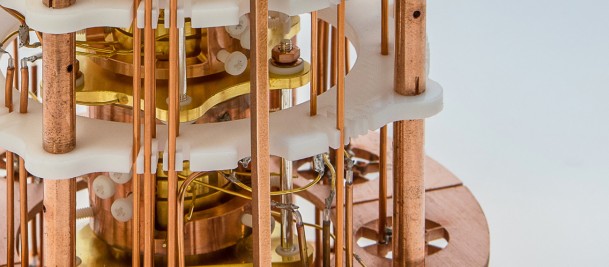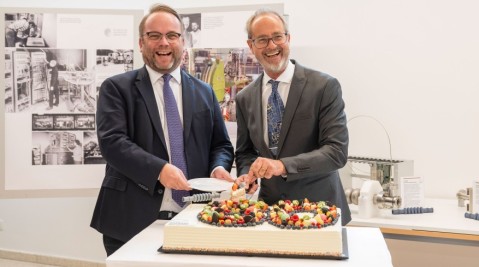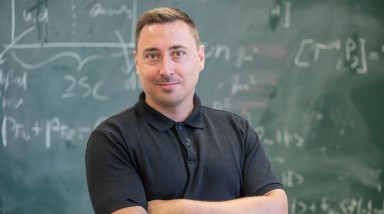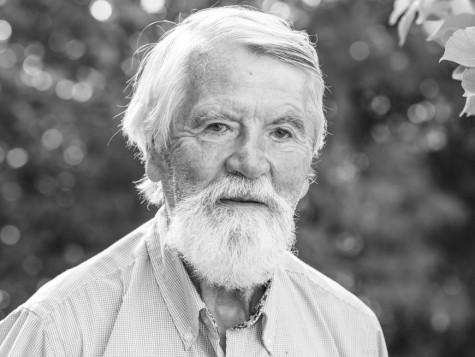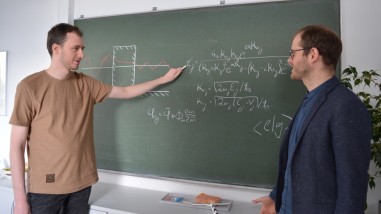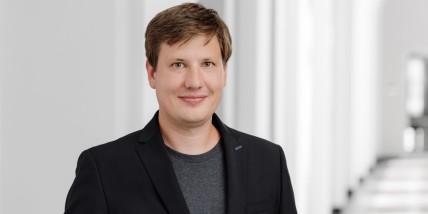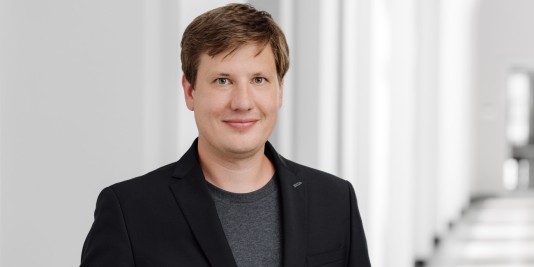-
![]() Picture: Danielle Adams for TRIUMF
Picture: Danielle Adams for TRIUMF![]() Picture: Danielle Adams for TRIUMF
Picture: Danielle Adams for TRIUMFHow long did it take for our sun to form?
2024/11/14
Long-sought measurement to determine the timescale of the Sun’s birth
Have you ever wondered how long it took our Sun to form in its stellar nursery? An international collaboration of scientists is now closer to an answer. They succeeded in the measurement of the bound-state beta decay of fully-ionised thallium (205Tl81+) ions at the Experimental Storage Ring (ESR) of GSI/FAIR. This measurement has profound effects on the production of radioactive lead (205Pb) in asymptotic giant branch (AGB) stars and can be used to help determine the Sun’s formation time. The results have been published in the journal Nature.
-
![]() Picture: MPIK, Ralf Lackner
Picture: MPIK, Ralf Lackner![]() Picture: MPIK, Ralf Lackner
Picture: MPIK, Ralf LacknerWhy is iron more abundant than gold?
2024/12/03
On the occasion of the 70-year anniversary of CERN, the Institute for Nuclear Physics invites you to a public evening lecture (in German) with Prof. Dr. Klaus Blaum at the lecture hall of the “Maschinenhaus” (S1|05) on Tuesday, December 3, at 18 o'clock. The talk will carry you away to the world of antimatter and short-lived radioactive atomic nuclei.
-
![]() Picture: Klaus Mai
Picture: Klaus Mai![]() Picture: Klaus Mai
Picture: Klaus MaiImpressive insight behind the scenes of accelerator research
2024/10/02
Electron acceleration in Darmstadt celebrates its 60th anniversary
Where students of quantum physics usually work: Numerous visitors and invited guests took advantage of the 60th anniversary of the particle accelerator to take a look behind the scenes.
-
![]() Picture: Klaus Mai
Picture: Klaus Mai![]() Picture: Klaus Mai
Picture: Klaus MaiBreaking new ground in nuclear physics
2024/09/06
ERC Starting Grant for physicist Alexander Tichai
Alexander Tichai is receiving a Starting Grant from the European Research Council (ERC) for his project “DeformedNuclei – Ab initio pathway to deformed nuclei”. In the project the theoretical physicist is developing new methods for investigating deformed atomic nuclei and analysing the effects of interaction models on the predicted nuclear shapes. The funding totals 1.5 million euros.
-
![]() Picture: Nature communications | Source: https://www.nature.com/articles/s41467-024-50585-6/figures/1
Picture: Nature communications | Source: https://www.nature.com/articles/s41467-024-50585-6/figures/1![]() Picture: Nature communications | Source: https://www.nature.com/articles/s41467-024-50585-6/figures/1
Picture: Nature communications | Source: https://www.nature.com/articles/s41467-024-50585-6/figures/1Team with TU participation realises quantum sensors in space
2024/08/19
Publication by TU researchers in the renowned journal 'Nature Communications'
An international consortium including the Theoretical Quantum Optics working group led by Professor Enno Giese (Department of Physics at TU Darmstadt) has experimentally realised quantum sensors for the first time on the International Space Station ISS at NASA's Cold Atom Laboratory. The scientists have now published their research results in ‘Nature Communications’.
-
![]() Picture: ESA
Picture: ESA![]() Picture: ESA
Picture: ESANew phase in neutron stars
2024/07/09
TU research team publication in renowned journal “Physical Review Letters”
Neutron stars are extreme objects whose inner matter can take on exotic forms. Researchers at TU Darmstadt and the University of Copenhagen have now been able to predict a new phase that favours “nuclear pasta”.
-
![]() Bild: privat
Bild: privat![]() Bild: privat
Bild: privatTrauer um Professor Peter Armbruster
2024/07/08
Mitentdecker der Darmstädter Elemente ist tot.
Professor Dr. Peter Armbruster war von 1971 bis 1996 leitender Wissenschaftler bei der Gesellschaft für Schwerionenforschung (GSI) in Darmstadt. Am 01. Februar 1985 wurde er zum Honorarprofessor am Fachbereich Physik der Technischen Hochschule Darmstadt ernannt.
-
![]() Picture: akromin/TU Darmstadt
Picture: akromin/TU Darmstadt![]() Picture: akromin/TU Darmstadt
Picture: akromin/TU DarmstadtUnderstanding the interior of atomic nuclei
2024/07/01
Publication by TU researchers in the renowned journal “Physical Review Letters”
Atomic nuclei can be tiny magnets. Their magnetic moment can be precisely measured, but the corresponding calculations have been deficient until now. Physicists from TU Darmstadt have now solved this problem, as they report in the journal “Physical Review Letters”.
-
![]() Picture: Christian Karres
Picture: Christian Karres![]() Picture: Christian Karres
Picture: Christian KarresWhat is “time” for quantum particles?
2024/05/16
Publication by TU Darmstadt researchers in renowned journal “Science Advances”
In an amazing phenomenon of quantum physics known as tunneling, particles appear to move faster than the speed of light. However, physicists from Darmstadt believe that the time it takes for particles to tunnel has been measured incorrectly until now. They propose a new method to stop the speed of quantum particles.
-
![]() Picture: Martin Braun
Picture: Martin Braun![]() Picture: Martin Braun
Picture: Martin BraunResearch for nuclear arms control
2024/05/15
TU Darmstadt and PRIF establish Professorship for Peace Research in Natural Sciences
Professor Malte Göttsche is to take over the newly-created Professorship for Peace Research in Natural Sciences in June 2024. It is being set up jointly by TU Darmstadt and the Peace Research Institute Frankfurt (PRIF) as part of the joint project “Cluster for Natural and Technical Science Arms Control Research” (CNTR), and is initially being funded by the Federal Foreign Office. With the appointment of Malte Göttsche, PRIF and TU Darmstadt are contributing to the strengthening of scientific and technical peace research in Hesse.
Department of Physics
Archive
Archive




